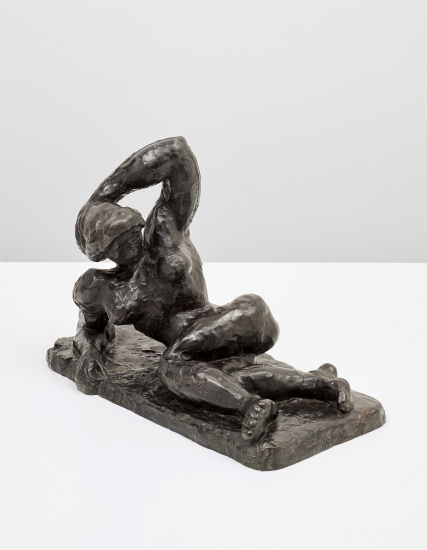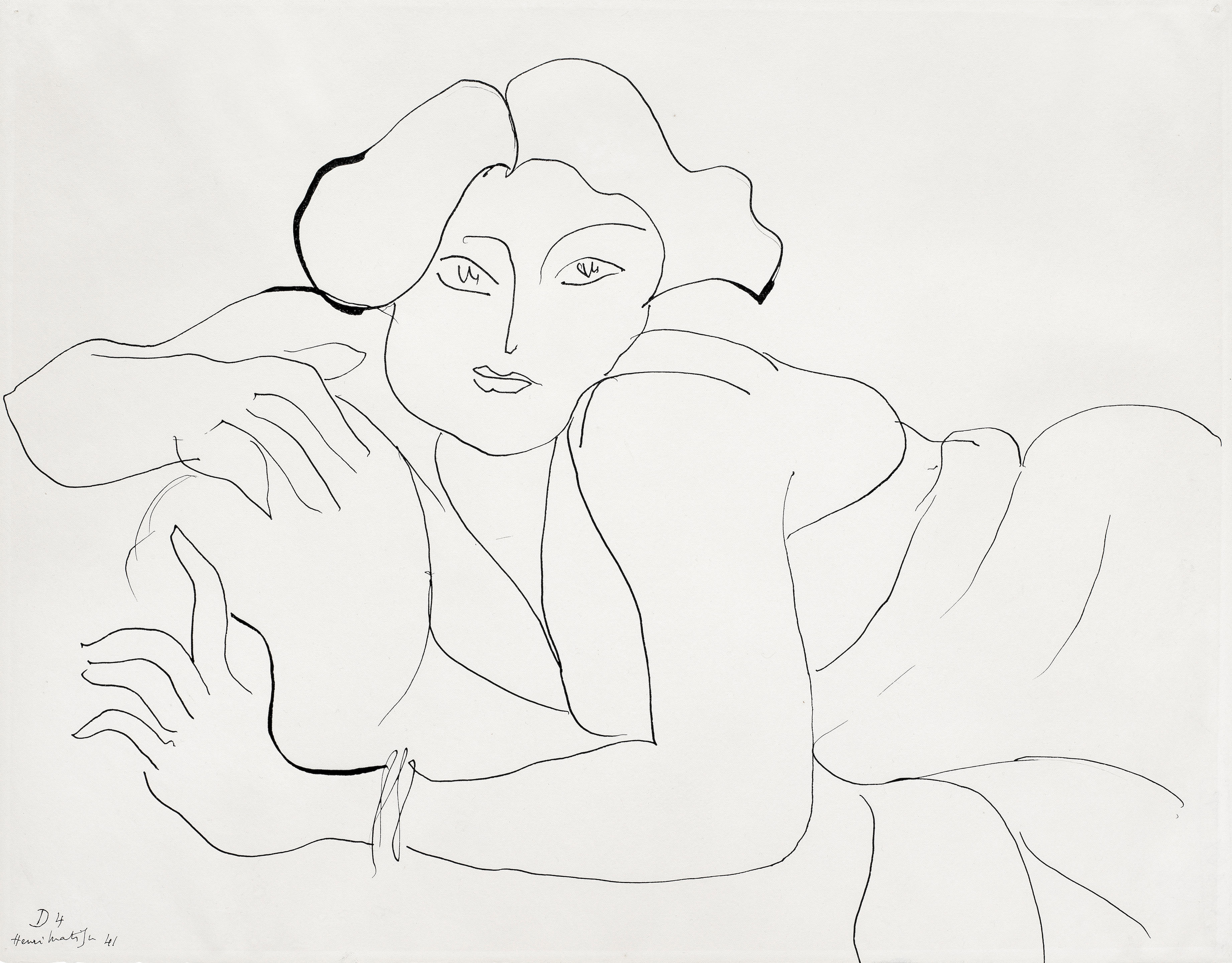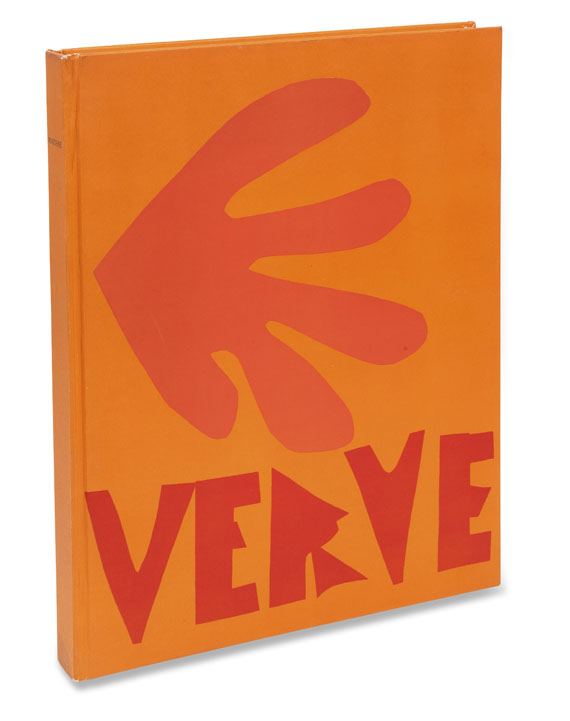PROPERTY FROM A PRIVATE COLLECTION, MILAN HENRI MATISSE (1869-1954) Paysage, Corse signed 'H. Matisse' (lower right) oil on panel 12.7 x 22.6cm (5 x 8 7/8in). Painted in Corsica in 1898 Fußnoten The authenticity of this work has been confirmed by the late Madame Wanda de Guébriant. Provenance Perls Collection, New York. Maurice Gutman Collection, New York (acquired from the above circa 1965). Charles Kurt Silberstein Collection, New York; his estate sale, Christie's, New York, 10 May 2007, lot 265. Acquired at the above sale by the present owner. Literature J. Poncin, Matisse à Ajaccio, 1898. Lumière et couleur révélées, Ajaccio, 2017, no. 9 (illustrated p. 133). Paysage, Corse and the series it comes from stands as a precursor to Matisse's revolutionary artistic style, precipitating the Fauve movement and the lifelong experimentation with colour and form that this would ignite. Dating to 1898 the present work illustrates a definitive change and newfound freedom in the artist's palette and brushwork. Matisse first started painting as a 20-year-old law student, whilst recovering from appendicitis at his parents' home in Bohain-en-Vermandois. Within the year he had abandoned law and moved to Paris to study under Gustave Moreau who encouraged him to examine the Old Masters and to develop his use of colour. By the mid to late 1890s a Corot-like influence can be seen in a slight softening of line and a certain luminosity hitherto not seen in his sombre landscapes. However, desolate views of Brittany in 1896 such as Belle-Île show how even two years before the present work was painted, Matisse's palette was comparatively subdued. Matisse was introduced to Impressionism through his friendship with the Australian artist John Russell who was painting alongside Monet and van Gogh. Russell gave him a drawing by the latter and taught the younger artist about colour theory, grinding and mixing his own pigments whilst painting with Matisse on Belle-Île. This transformative sojourn culminated in La Desserte of 1896-1897, regarded as Matisse's first truly modern work. The artist's studies continued when he travelled to London to see the works of Turner on the recommendation of Camille Pissarro Matisse had married Amélie Parayre on 10 January 1898 and the pair honeymooned in London expressly to view these paintings. Matisse would describe seeing these works as an epiphany: 'Turner lived in a cellar. Once a week he had the shutters suddenly flung open, and then what incandescence! What dazzlement! What jewels!' (Matisse quoted in H. Spurling, The Unknown Matisse: A Life of Henri Matisse Vol. I, 1869-1908, London, 1998, p. 156). From London the newly-weds progressed to Corsica, arriving on 9 February 1898. Thus far unable to support himself through painting alone, Matisse decided to allow himself a year dedicated to art. Five months were spent on the Mediterranean island before the couple relocated to Toulouse: this year would become a pivotal point for the artist, whose artistic development 'came with his travels. In Brittany his palette grew light; in Corsica and Toulouse it caught fire' (P. Schneider, Matisse, London, 1984, p. 605). In Corsica, Matisse was said to revel in the slow island pace and timeless mountainous landscape. The couple rented two rooms in the Villa de la Rocca on the outskirts of Ajaccio and in the five months he spent there Matisse produced 55 paintings, most of which were executed in or around these lodgings. His subjects tended to be simply grouped still lifes and the surrounding landscape, such as the present work: 'the motif to which Matisse returned more often than to any other on the island was a single olive tree, or group of trees, on a flat patch of ground: again and again his trees caught fire in a blaze of colour, becoming sometimes almost incandescent beneath his prodding, probing brushstrokes' (H. Spurling, op. cit., p. 167). Paysage, Corse focuses on this olive grove with the scorched ground and Mediter
PROPERTY FROM A PRIVATE COLLECTION, MILAN HENRI MATISSE (1869-1954) Paysage, Corse signed 'H. Matisse' (lower right) oil on panel 12.7 x 22.6cm (5 x 8 7/8in). Painted in Corsica in 1898 Fußnoten The authenticity of this work has been confirmed by the late Madame Wanda de Guébriant. Provenance Perls Collection, New York. Maurice Gutman Collection, New York (acquired from the above circa 1965). Charles Kurt Silberstein Collection, New York; his estate sale, Christie's, New York, 10 May 2007, lot 265. Acquired at the above sale by the present owner. Literature J. Poncin, Matisse à Ajaccio, 1898. Lumière et couleur révélées, Ajaccio, 2017, no. 9 (illustrated p. 133). Paysage, Corse and the series it comes from stands as a precursor to Matisse's revolutionary artistic style, precipitating the Fauve movement and the lifelong experimentation with colour and form that this would ignite. Dating to 1898 the present work illustrates a definitive change and newfound freedom in the artist's palette and brushwork. Matisse first started painting as a 20-year-old law student, whilst recovering from appendicitis at his parents' home in Bohain-en-Vermandois. Within the year he had abandoned law and moved to Paris to study under Gustave Moreau who encouraged him to examine the Old Masters and to develop his use of colour. By the mid to late 1890s a Corot-like influence can be seen in a slight softening of line and a certain luminosity hitherto not seen in his sombre landscapes. However, desolate views of Brittany in 1896 such as Belle-Île show how even two years before the present work was painted, Matisse's palette was comparatively subdued. Matisse was introduced to Impressionism through his friendship with the Australian artist John Russell who was painting alongside Monet and van Gogh. Russell gave him a drawing by the latter and taught the younger artist about colour theory, grinding and mixing his own pigments whilst painting with Matisse on Belle-Île. This transformative sojourn culminated in La Desserte of 1896-1897, regarded as Matisse's first truly modern work. The artist's studies continued when he travelled to London to see the works of Turner on the recommendation of Camille Pissarro Matisse had married Amélie Parayre on 10 January 1898 and the pair honeymooned in London expressly to view these paintings. Matisse would describe seeing these works as an epiphany: 'Turner lived in a cellar. Once a week he had the shutters suddenly flung open, and then what incandescence! What dazzlement! What jewels!' (Matisse quoted in H. Spurling, The Unknown Matisse: A Life of Henri Matisse Vol. I, 1869-1908, London, 1998, p. 156). From London the newly-weds progressed to Corsica, arriving on 9 February 1898. Thus far unable to support himself through painting alone, Matisse decided to allow himself a year dedicated to art. Five months were spent on the Mediterranean island before the couple relocated to Toulouse: this year would become a pivotal point for the artist, whose artistic development 'came with his travels. In Brittany his palette grew light; in Corsica and Toulouse it caught fire' (P. Schneider, Matisse, London, 1984, p. 605). In Corsica, Matisse was said to revel in the slow island pace and timeless mountainous landscape. The couple rented two rooms in the Villa de la Rocca on the outskirts of Ajaccio and in the five months he spent there Matisse produced 55 paintings, most of which were executed in or around these lodgings. His subjects tended to be simply grouped still lifes and the surrounding landscape, such as the present work: 'the motif to which Matisse returned more often than to any other on the island was a single olive tree, or group of trees, on a flat patch of ground: again and again his trees caught fire in a blaze of colour, becoming sometimes almost incandescent beneath his prodding, probing brushstrokes' (H. Spurling, op. cit., p. 167). Paysage, Corse focuses on this olive grove with the scorched ground and Mediter


.jpg)



.jpg)






.jpg)
Testen Sie LotSearch und seine Premium-Features 7 Tage - ohne Kosten!
Lassen Sie sich automatisch über neue Objekte in kommenden Auktionen benachrichtigen.
Suchauftrag anlegen